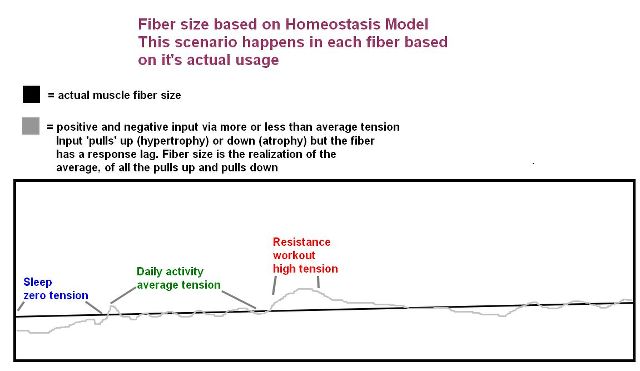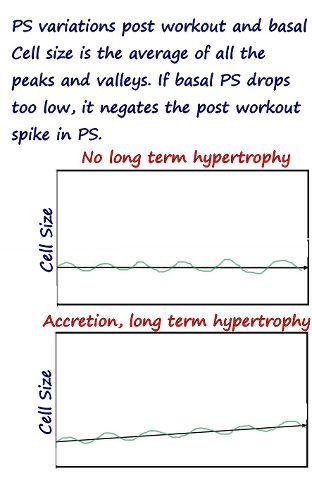NWlifter
Active Member
https://physoc.onlinelibrary.wiley.com/doi/pdf/10.1113/jphysiol.1954.sp005161
Very interesting....
Apparently, in real life, most motor units 'come online' with close to full tetanic tension, they pulse in and out. So the logical (seemingly) idea that rate coding slowly increases fiber tension 'in real life' is not quite right. Theoretically, it would, but seems that's not what happens. Fibers are never on during exercise, for such a short time that they only 'twitch' (low tension) without summation. (range of tetany)
Further, we can't also forget that the only time a fiber can actually create and thus 'feel' maximum tension is at full tetany near the stretch position for optimal actin-myosin over lap. (most actual cross bridges attaching) So even a 1RM with an exercise where max effort is in the mid range to contraction area, still wouldn't cause maximum 'tension in a fiber'. Chasing max tension seems futile...
What does this mean?
That in real life, a 5RM probably isn't increasing the actual tension that fibers are feeling/producing over a say 10RM. They just create max tension more often. That was how I first learned this, and posted about it. Then found more info. and changed my outlook. Now I see this and it seems the first rendition was more correct. MU's only vary their actual tension at very low or very high maximal contractions. Most 'come on line' at, or close enough to, full tetanic tension. It's more about how often they 'produce' that tension that varies whole muscle tension.
Very interesting....
Apparently, in real life, most motor units 'come online' with close to full tetanic tension, they pulse in and out. So the logical (seemingly) idea that rate coding slowly increases fiber tension 'in real life' is not quite right. Theoretically, it would, but seems that's not what happens. Fibers are never on during exercise, for such a short time that they only 'twitch' (low tension) without summation. (range of tetany)
Further, we can't also forget that the only time a fiber can actually create and thus 'feel' maximum tension is at full tetany near the stretch position for optimal actin-myosin over lap. (most actual cross bridges attaching) So even a 1RM with an exercise where max effort is in the mid range to contraction area, still wouldn't cause maximum 'tension in a fiber'. Chasing max tension seems futile...
What does this mean?
That in real life, a 5RM probably isn't increasing the actual tension that fibers are feeling/producing over a say 10RM. They just create max tension more often. That was how I first learned this, and posted about it. Then found more info. and changed my outlook. Now I see this and it seems the first rendition was more correct. MU's only vary their actual tension at very low or very high maximal contractions. Most 'come on line' at, or close enough to, full tetanic tension. It's more about how often they 'produce' that tension that varies whole muscle tension.
Last edited:


